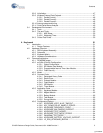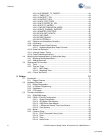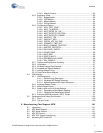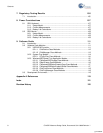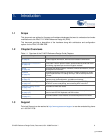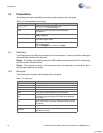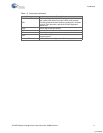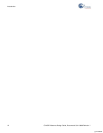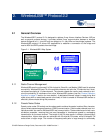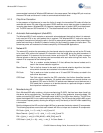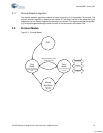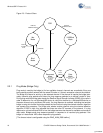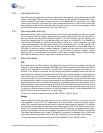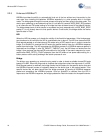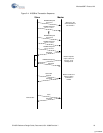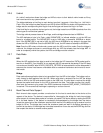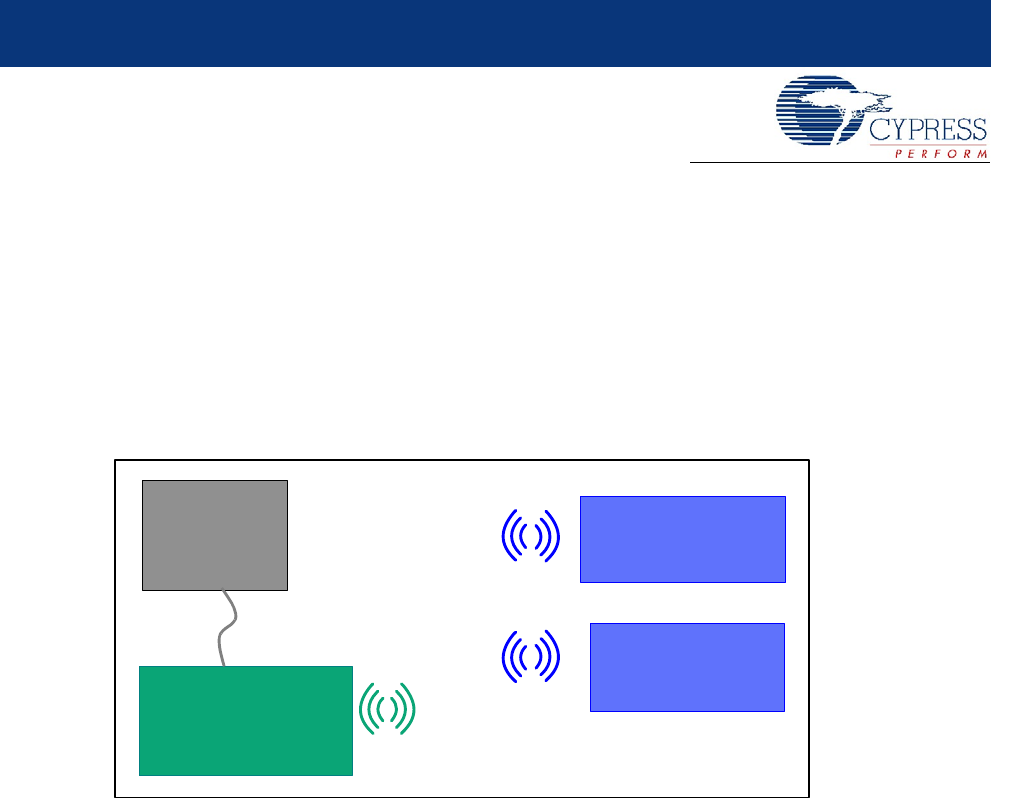
CY4672 Reference Design Guide, Document # 001-16968 Revision ** 13
2. WirelessUSB™ Protocol 2.2
2.1 General Overview
The WirelessUSB™ protocol 2.2 is designed to address 2-way Human Interface Devices (HID) as
well as general purpose devices; it provides reliable 2-way communication between a wireless
device configured as 1:1 (one HID and one bridge) or 2:1 (two HIDs and one bridge) systems. The
WirelessUSB protocol 2.2 allows HID applications to establish a connection to the bridge and
receive ACK and DATA packets from the bridge.
Figure 2-1. WirelessUSB 2-Way System
2.1.1 Radio Channel Management
WirelessUSB uses the unlicensed 2.4 GHz Industrial, Scientific, and Medical (ISM) band for wireless
connectivity. WirelessUSB uses 78 of the available channels and splits the 78 channels into 6 chan-
nel subsets consisting of 13 channels each. The channel subsets are used by each network to mini-
mize the probability of interference from other WirelessUSB systems (see the Channel Selection
Algorithm on page 15 section for more details). A designated channel subset is used during bind
mode (along with an associated pseudo noise code) in order to enable all WirelessUSB devices to
effectively communicate during this procedure.
2.1.2 Pseudo Noise Codes
Pseudo noise codes (PN codes) are the codes used to achieve the special matched filter character-
istics of direct sequence spread spectrum (DSSS) communication. Certain codes referred to as ‘mul-
tiplicative codes’ are used for WirelessUSB 2-way communication. These codes have minimal cross-
correlation properties, meaning they are less susceptible to interference caused by overlapping
transmissions on the same channel. The length of the PN code results in different communication
characteristics. Higher data rates are achieved with 32-chips/bit PN codes, while 64-chips/bit PN
codes allow a longer range. The number of frequency/code pairs is large enough to comfortably
Host PC
or Laptop
WirelessUSB
Keyboard
(Transceiver)
WirelessUSB
Mouse
(Transceiver)
WirelessUSB-LS
Bridge
(Transceiver)
USB
-
[+] Feedback



